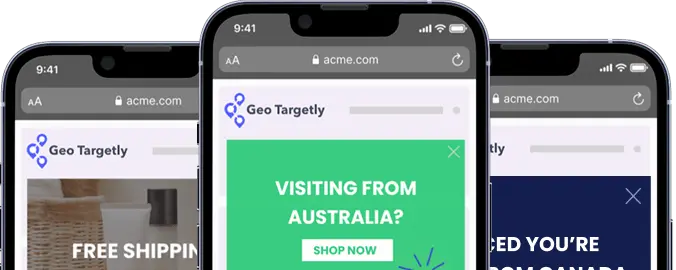

Understanding the differences between geotargeting vs geofencing is crucial in deciding which strategy you should use in your marketing campaigns. Even though this type of digital jargon can be confusing at times, it’s important to dig deeper to better understand their concepts and uses.
With technology evolving every day, marketers and customers have been anticipating the progression of geo-marketing. Through the popularisation of social media ad campaigns and geo-marketing popups on certain websites, we’ve become familiar with what geotargeting is.
With geofencing gaining ground as a highly effective geo-marketing tool, it is also popular among local businesses and customers.
In this post, we dig deeper to understand the differences between these two strategies and let you decide which is the most effective at reaching your target audience.

Unlike geo-targeting, geofencing is highly location-specific
Basically, it establishes a virtual fence around a defined radius. While geofencing can be over a location radius of any size, anywhere from a mile to state-wide, when most people refer to geofencing, they are speaking about a tight location radius.
This could include locations such as universities, local businesses, and retail stores.
While geofencing draws a virtual barrier around a specific location, geo-targeting hones in on specific consumers, primarily targeting IP address geolocation.
Unlike geofencing, geo-targeting tends to work better for larger geographical audiences
Geo-targeting works better for larger geographical audiences because ads can be more specifically defined by demographics and keywords. This is the standard targeting strategy implemented for social media and search engine ads.
When considering geo-targeting vs geofencing, what geofencing does, instead, is show ads to individuals inside the geo-fenced radius if they are browsing the web or have enabled push notifications. This will alert them of a local deal or the distance they are from a particular store location, for instance.
Geo-targeting uses IP addresses while geofencing uses GPS
Geofencing uses a consumer's GPS location to send push notifications or popups so that only individuals or devices entering that virtual barrier are targeted.
In contrast, geo-targeting uses the device’s IP address to gauge the geolocation of a consumer and also to understand specific criteria connected with that IP address, such as demographics, interests, and behaviour.
Geotargeting vs geofencing is really flexibility vs accuracy
While geo-targeting offers flexibility, geofencing offers accuracy.
With geo-targeting, your ads or messaging will be displayed to a location-specific audience. If you want to advertise to certain demographies depending on their region, country, state or city, then geo-targeting is the ideal tool.
Using geo popups, you can now display popups based on visitor region, country, state or city. The good news is that these are easy to set up and are fully customisable to your needs.
With geofencing, your ads can be displayed to everyone inside the geofence or the area specified. Unlike geo-targeting, geofencing does not exclude a certain audience or demography. The aim, instead, is to target everyone within the specified radius.
The strategy you choose depends on what you’re trying to achieve. Which is the best for you?
There are advantages to both geofencing and geo-targeting. Which one you end up using, however, depends on your target audience and what your marketing objectives are.
If you want to reach all customers in a narrowly-defined geographic area, geofencing may be the best option for you. However, if your preference is to target customers at a regional, country, state or city level, geotargeting may be a better fit.
Both geotargeting and geofencing could play a critical role in your regional advertising efforts. It’s up to you whether you want to prioritise proximity marketing or a more location-based segmentation.
Now, using your knowledge of these strategies, you can make decisions that maximise your business opportunities. Your efforts could lead to immediate conversions and a more dedicated customer base.




.webp)


































